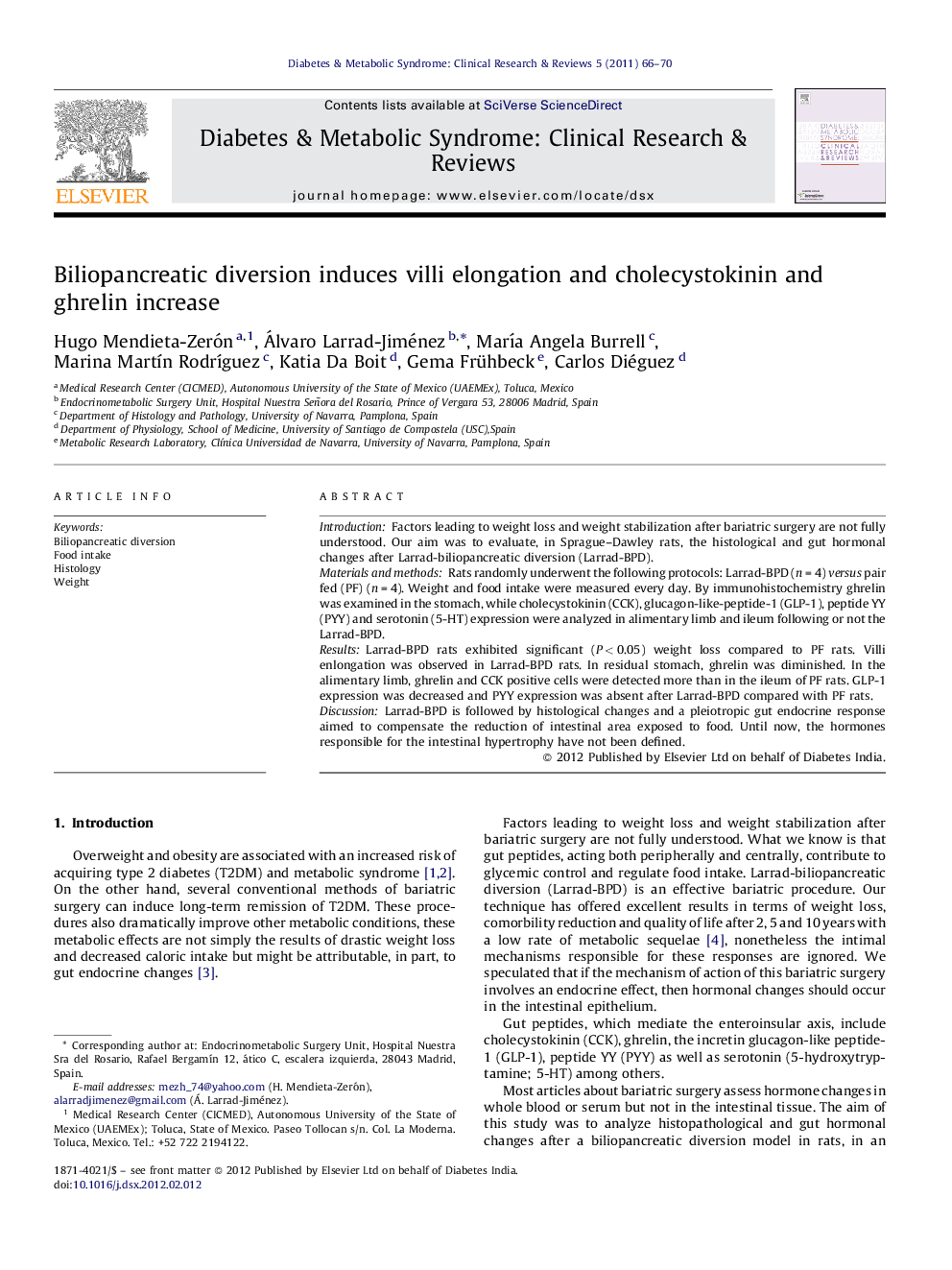| Article ID | Journal | Published Year | Pages | File Type |
|---|---|---|---|---|
| 2910312 | Diabetes & Metabolic Syndrome: Clinical Research & Reviews | 2011 | 5 Pages |
IntroductionFactors leading to weight loss and weight stabilization after bariatric surgery are not fully understood. Our aim was to evaluate, in Sprague–Dawley rats, the histological and gut hormonal changes after Larrad-biliopancreatic diversion (Larrad-BPD).Materials and methodsRats randomly underwent the following protocols: Larrad-BPD (n = 4) versus pair fed (PF) (n = 4). Weight and food intake were measured every day. By immunohistochemistry ghrelin was examined in the stomach, while cholecystokinin (CCK), glucagon-like-peptide-1 (GLP-1), peptide YY (PYY) and serotonin (5-HT) expression were analyzed in alimentary limb and ileum following or not the Larrad-BPD.ResultsLarrad-BPD rats exhibited significant (P < 0.05) weight loss compared to PF rats. Villi enlongation was observed in Larrad-BPD rats. In residual stomach, ghrelin was diminished. In the alimentary limb, ghrelin and CCK positive cells were detected more than in the ileum of PF rats. GLP-1 expression was decreased and PYY expression was absent after Larrad-BPD compared with PF rats.DiscussionLarrad-BPD is followed by histological changes and a pleiotropic gut endocrine response aimed to compensate the reduction of intestinal area exposed to food. Until now, the hormones responsible for the intestinal hypertrophy have not been defined.
